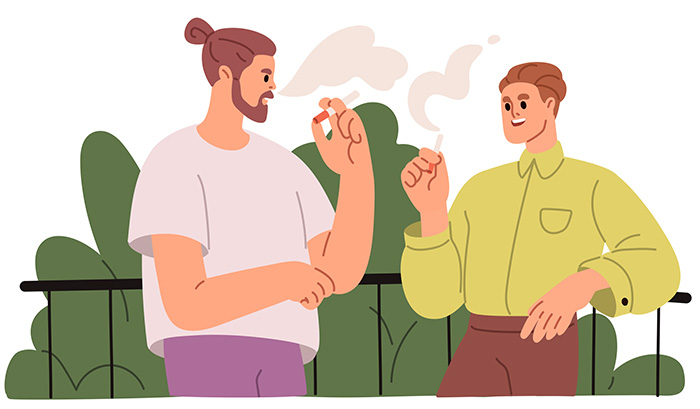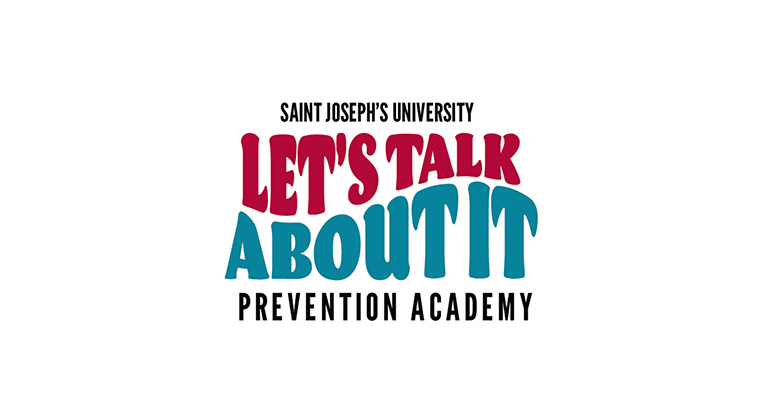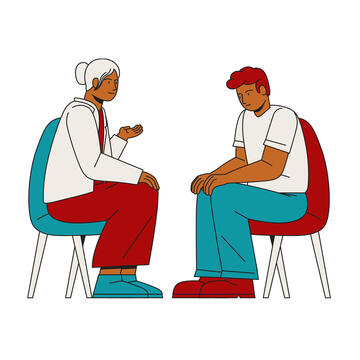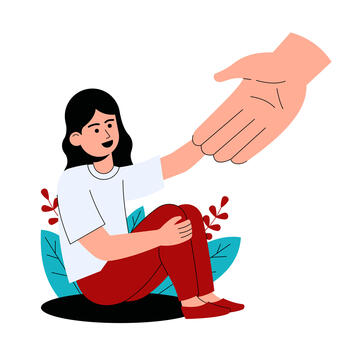
Help Me Help My Friend
Strategies to Talk about Vaping or Other Drug Use
By: David Sherrell
I have a friend...

His name is Ian. We’ve known each other since the first grade and remain close to this day, many years later. Ian and I are similar in a lot of ways – we both love to get into a good debate on almost any subject, like the same music, and had similar relationships with our families. Also, we both ultimately became addicted to cigarettes and alcohol. I got help for my struggles in 2006; my best friend continued to drink and smoke for many years afterward.
I tried to talk to him about my worries for his health. I had learned a lot about addiction and recovery and how to live a healthy life now that I was no longer using cigarettes, alcohol or other drugs. I wanted him to join me on that journey – but even if he wasn’t interested in recovery, maybe I could at least get him to realize that his behaviors were unhealthy.

It felt like talking to a wall.
Sometimes, he’d argue. Sometimes he would say he understood my concerns but he had everything under control. Every time he suffered a big negative consequence, like losing a job or an important relationship, I would try again. “Do you think your drinking and smoking played a role in this?” He would explain that no, the problem had some other cause. Eventually, we agreed not to discuss it so often, although as his drinking got worse, I did have to ask him for specific things like, “Please don’t drink before my wedding. I’m trying to keep my new in-laws impressed with me, and a drunk best man would not help that cause.” (He did manage that request.)
Eventually, we agreed not to discuss it so often, although as his drinking got worse, I did have to ask him for specific things like, “Please don’t drink before my wedding. I’m trying to keep my new in-laws impressed with me, and a drunk best man would not help that cause.” (He did manage that request.)
Here’s something I know now as a Prevention Specialist:
Even though it may feel like those talks mostly
went nowhere, they always had some
impact.

If you can share your concerns in a productive way, you can maximize that impact. There are many suggestions available from places such as the National Institute on Drug Abuse (NIDA) for how to talk to someone about their use of substances – but much of the advice available on the Internet is for adults. Unfortunately, prevention-related research is also pretty silent on what could have helped me help Ian more effectively when we were younger.
So I did some research on what was most effective for adults helping each other, where those suggestions might apply to teenagers who use substances, and how we in the prevention field are talking about intervention these days. You’ve heard the word “intervention” before – it means a few different things, but in this case it means talking to someone you care for, about something going on with them that concerns you. If they’ve got a behavior you hope to see change, it’s time for an intervention; if that behavior is vaping, you’ve definitely got reason to be concerned. So I pulled together everything I learned into what I hope is an easily memorable formula for you to try, for this friend-tofriend intervention.

They’re called the C.A.R.E. steps:
Check
Approach
Respond
Engage
Here's How it Works...
Step 1: Check your Understanding
When you’re ready to talk to your friend about their vaping, make sure you know the latest facts about what it does to the body, especially the lungs and brain. (I’m going to share some of that knowledge and some resources to find more in my next post.)
You should also know the facts about your friend – meaning, understand what’s happening in their life, or what’s in danger of happening soon, because they’re vaping. Are they beginning to risk getting caught with it at school, causing major consequences? Is it affecting their athletic performance? Are they either vaping every day, or when they’re not vaping, you notice their attitude and behavior changes? Those are facts to point out too. Now let’s talk about how to present them.


Step 2: Approach with Empathy
It is important to know when, where, and how to approach your friend. Pick a private setting, when you’re not rushed for time. Make sure your friend isn’t vaping while you talk. And approach with empathy – meaning, with the mindset that this is about them, their behaviors that worry you as their friend, not about you trying to force them to change because you don’t like what they’re doing. What you don’t like is how it’s hurting or may hurt someone you care about. Keep the focus on them, their feelings, their consequences.
You can show this empathy by asking open-ended questions – questions that don’t have a “yes” or “no” answer, that require them to explain something to you in more detail. In general, “Do” questions are closed-ended (“Do you understand why I’m worried?”); “How” questions tend to be open-ended (“How has vaping affected your life, in your opinion?”) Once you’ve asked a question, listen actively to their answer – don’t just wait until it’s your turn to talk again.
They may tell you that vaping has affected their life positively – Ian certainly told me more than once the drinking helped him. How do you respond to that?
Step 3: Respond Supportively
Even though that’s probably not an opinion you share, this isn’t about convincing your friend that you’re right and they’re wrong. So just respond with your support. “I hear you.” “Sounds like from your perspective, vaping helps with your anxiety. I hear that a lot.”
Then, without contradicting them if they have said something you disagree with, offer some of those facts you are aware of. “Here’s what I’m seeing that concerns me…” Maybe they’re doing it more and more often. Maybe they’ve already gotten caught once and it hasn’t stopped them from vaping during school. Maybe their athletic performance is dropping. Maybe you’ve seen them appearing more and more stressed or anxious when they can’t sneak away to vape. Those are all important facts. Also important are the scientific facts about vaping. “I learned that vapes have these metals in them that aren’t supposed to be in the lungs. The researchers don’t know what the really long-term effects will be, but the short-term effects can include scratchy throat, or chest tightness, or a metallic taste in your mouth9,10. Have you ever experienced any of that?”
Offer them their own strengths as coping mechanisms or healthy alternatives to vaping. For example, here’s something I said to Ian when he said he didn’t think he could ever quit drinking: “The good news is, buddy, you are one of the most determined, relentless people I know. When you decide to quit, though it won’t be easy, you have that working hard in your favor.”
It’s ideal if you can keep asking open-ended questions to make your points. “What kind of consequence would make you want to quit?” And keep responding supportively, showing that you’re listening and that you care.


Step 4: Engage Support
If you have successfully picked a private time and place, approached your friend with empathy, used open-ended questions and active listening, and shared facts about your concerns, you have done an amazing job! All that’s left to do is to offer support. First of all, there’s your emotional support as a friend, a truly invaluable resource – but there are also others. You could visit teen.smokefree.gov from the National Cancer Institute together, and look for helpful information or resources, or call 1-800-QUIT-NOW.
But there may come a time when you need to approach a trusted adult for help. Whether that’s a school counselor, a parent or caregiver, or another trusted adult in your life, sometimes – and for just a few more years – it’s true, there are things adults can do for your friend that you cannot. Ask yourself, “Self, what consequences or issues in my friend’s life would make me decide it’s time to go to an adult?”
And finally, remember that as someone concerned for a friend’s substance use, sometimes you need support for yourself. For example, if your friend does decide to try quitting and you volunteer your emotional support, you may notice that they become more irritable, easily angered, heavily stressed or anxious. They may snap at you, say something hurtful. Rather than snapping back, being a supportive friend in this instance means seeking support for yourself – finding someone to vent to, to soothe the sting you just got.
For every conversation that didn’t seem to help, that felt like talking to a wall or even became an argument, I’m glad I never completely gave up. Because when Ian finally did decide to get help, one of the things he said to me eventually was,
“I did hear you, all those other times. I didn’t believe you. But I did think about it."

Check
- Know the facts about the substance of concern, the risks of using it.
- Notice the consequences in your friend’s life – changes in behavior or mood, getting caught or risking getting caught.
Approach
- Find a quiet, private moment to talk when you have plenty of time and your friend is away from their chosen substance.
- Ask open-ended questions such as “How has vaping affected you?”
- Demonstrate your empathy through active listening, rather than judging or arguing.
Respond
- Reflect back what you hear (“It sounds like…” “What I hear you saying is…”)
- Still without arguing, bring up some of the facts you gathered in the first step, about the substance’s risks and the consequences to your friend.
- Point out strengths they have that can be used to help improve their health – to quit, or cut back, or seek alternatives for using the substance to deal with stress.
Engage
- Share information about available resources.
- Know when it’s time to involve a trusted adult. Seek support for yourself if necessary.
References
- National Institute on Drug Abuse (NIDA). Parents & Educators [Internet]. 2024 [cited 2025 Feb 1]. Available from: https://nida.nih.gov/research-topics/parents-educators
- Kam JA, Krieger JL, Basinger ED, Figueroa-Caballero A. What do high school students say when they talk to their friends about substance use? Exploring the content of substance-use-specific communication with friends. Health Communication. 2016 May 3;31(5):522–35.
- Barnett E, Sussman S, Smith C, Rohrbach LA, Spruijt-Metz D. Motivational Interviewing for adolescent substance use: A review of the literature. Addictive Behaviors. 2012 Dec 1;37(12):1325– 34.
- Khemka I, Hickson L, Mallory SB. Evaluation of a Decision-Making Curriculum for Teaching Adolescents with Disabilities to Resist Negative Peer Pressure. J Autism Dev Disord. 2016 Jul;46(7):2372–84.
- MacArthur GJ, Harrison S, Caldwell DM, Hickman M, Campbell R. Peer-led interventions to prevent tobacco, alcohol and/or drug use among young people aged 11–21 years: a systematic review and meta-analysis. Addiction. 2016;111(3):391–407.
- Naar S, Suarez M. Motivational Interviewing with Adolescents and Young Adults.`. Guilford Publications; 2021.
- Onrust SA, Otten R, Lammers J, Smit F. School-based programmes to reduce and prevent substance use in different age groups: What works for whom? Systematic review and meta-regression analysis. Clinical Psychology Review. 2016 Mar 1;44:45–59.
- Tobler NS. Meta-analysis of 143 adolescent drug prevention programs: Quantitative outcome results of program participants compared to a control or comparison group. Journal of Drug Issues. 1986;16(4):537–67.
- Vaping [Internet]. Cleveland Clinic. [cited 2025 Feb 1]. Available from: https://my.clevelandclinic.org/health/treatments/21162-vaping
- CDC. Health Effects of Vaping [Internet]. Smoking and Tobacco Use. 2025 [cited 2025 Feb 1]. Available from: https://www.cdc.gov/tobacco/e-cigarettes/health-effects.html